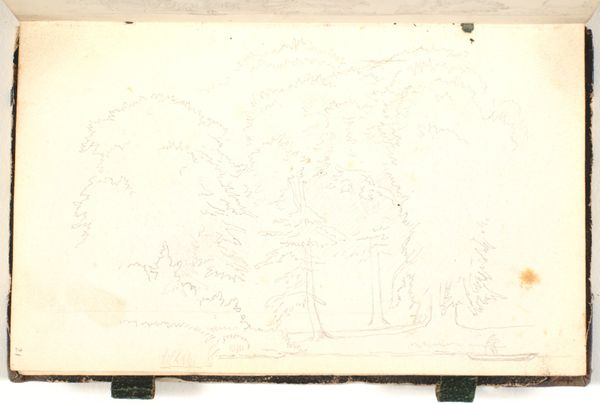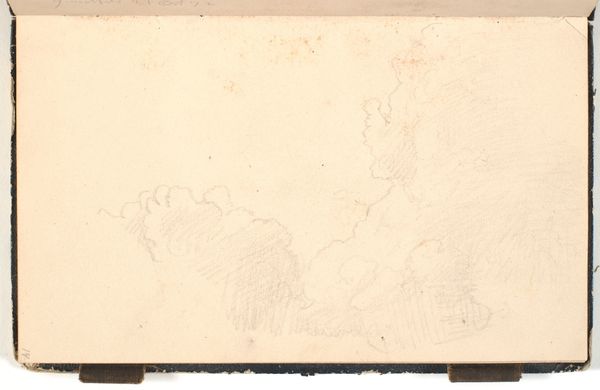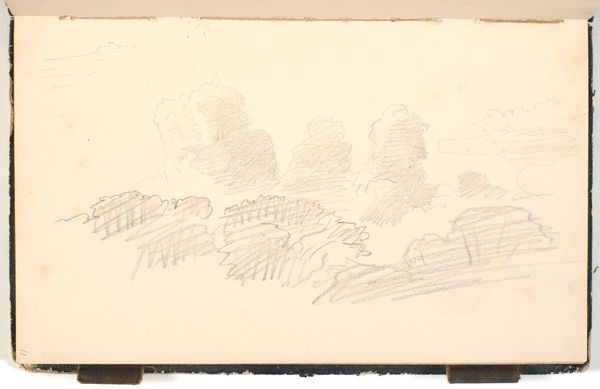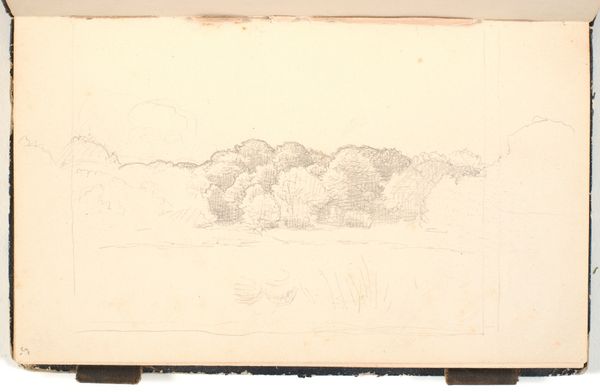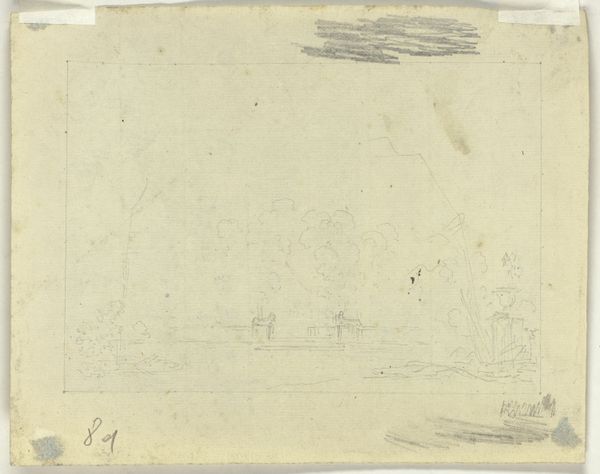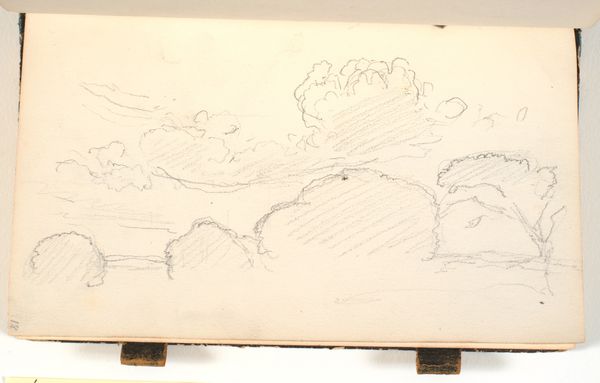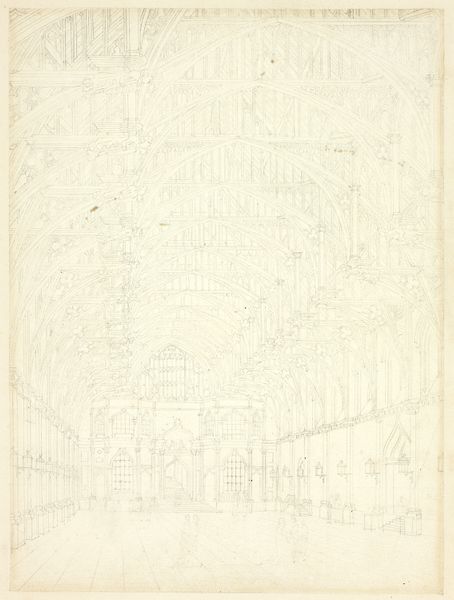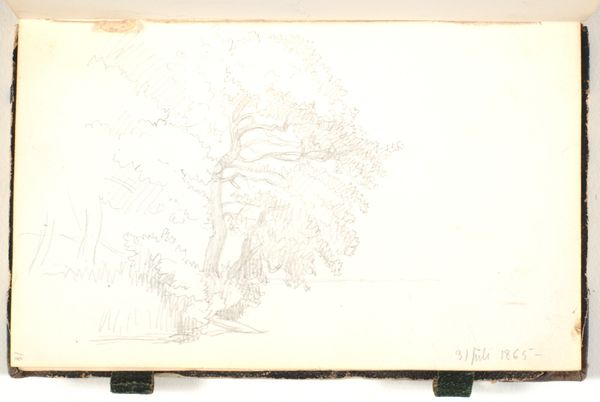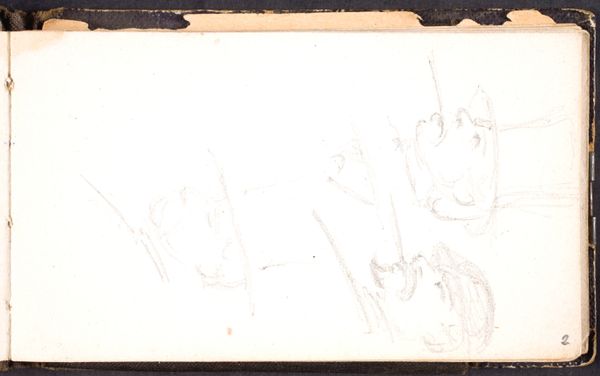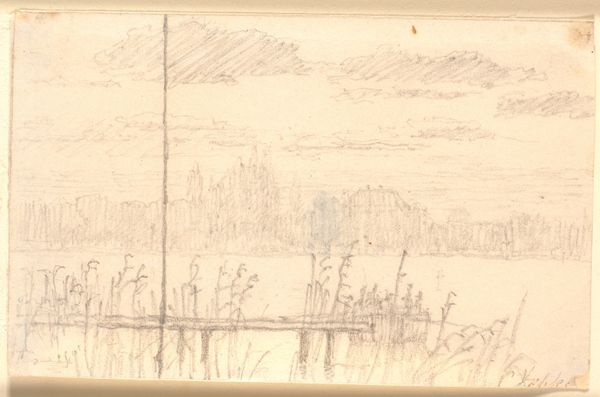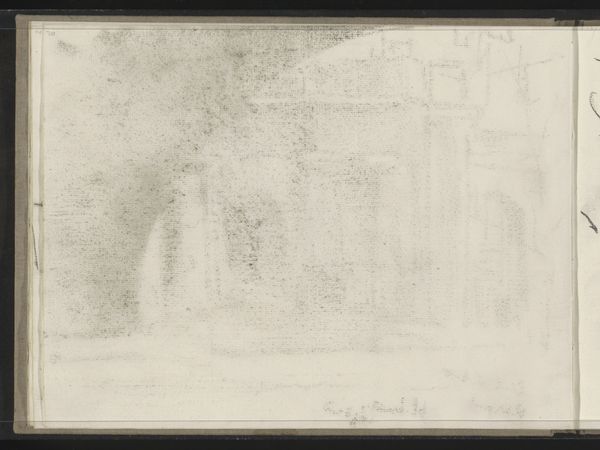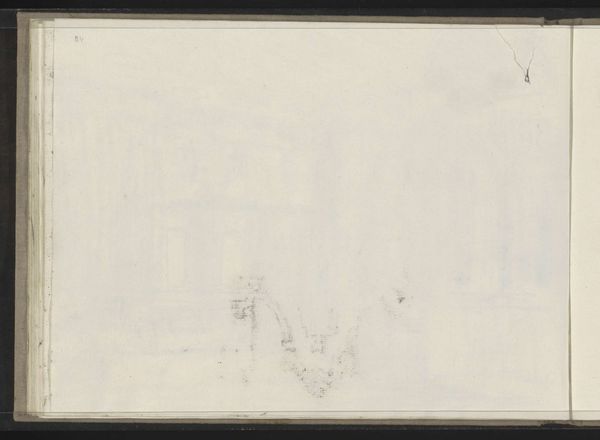
drawing, architecture
#
drawing
#
landscape
#
academic-art
#
architecture
#
realism
Dimensions: 71 mm (height) x 118 mm (width) x 14 mm (depth) (monteringsmaal), 63 mm (height) x 113 mm (width) (bladmaal)
Editor: This is a drawing by L.A. Schou from the 1860s, titled "Detalje af Berninis kolonade på Peterspladsen," or "Detail of Bernini's Colonnade in St. Peter's Square." It’s… airy, almost ghostly. It gives the impression of immense space. What do you see in it? Curator: Immediately, I’m drawn to the process. This isn’t just a representation; it's evidence of labor, a hand meticulously recording what the eye sees. Look at the repetitive lines used to build form and depth. We see the marks of the artist wrestling with perspective and light, translating massive architectural elements into a consumable, reproducible image. How does this contrast to the grand scale and material permanence of Bernini's actual colonnade? Editor: So, it's not just about what's depicted, but how it’s depicted? You mean, because a drawing is quicker and cheaper to produce than marble? Curator: Precisely. The drawing acts as a tool for dissemination, a way of bringing this monument to a wider audience through its material form. Think about the social context – academic art valued realism. But, the very act of creating and distributing these drawings allowed more people access to what was, effectively, Papal power. Was the drawing meant for an exclusive clientele, or was there an expectation that it would democratize access to architectural marvels, if only in image form? Editor: That’s fascinating. I was initially focused on the art, the end result. Curator: And there’s value in that initial reaction! But by considering the materials – paper, pencil – and the means of production and consumption, we see beyond the immediate aesthetic and into the broader social and economic networks in which art operates. Consider who has access to these drawing materials versus monumental marble quarries? Editor: I see what you mean. It's like thinking about the journey of the artwork, not just the arrival. Thanks. Curator: Indeed. This sketch reminds us to appreciate not just the image, but the conditions that allowed for its very existence.
Comments
No comments
Be the first to comment and join the conversation on the ultimate creative platform.
